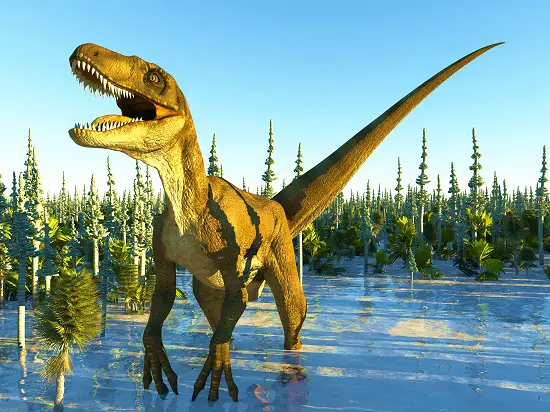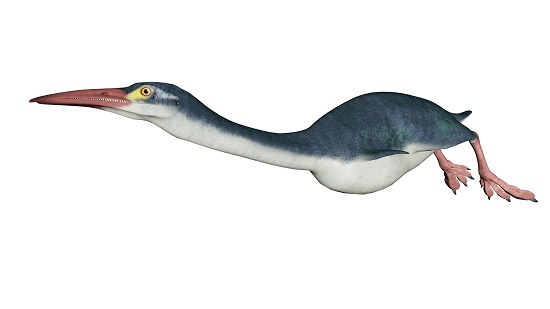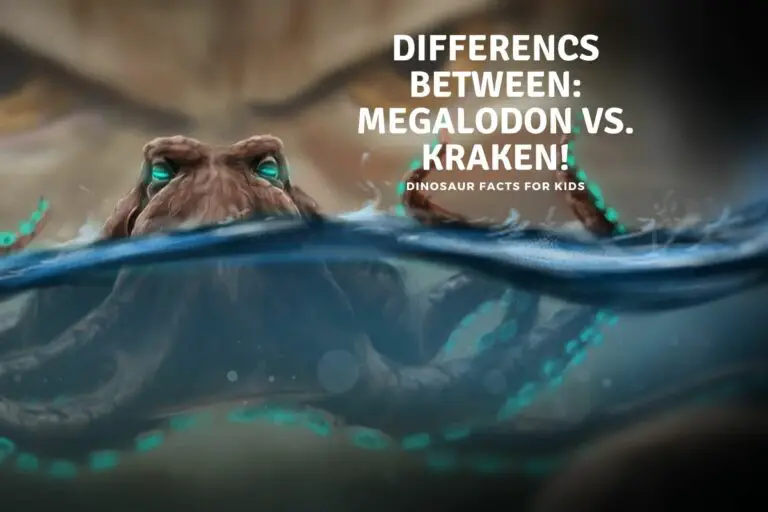Could Velociraptors Swim?
When we think of Velociraptors, we often picture them hunting in packs or maybe even communicating with each other. But have you ever thought about them swimming?
Velociraptors are thought to be primarily land-based hunters adapted to running and ambushing prey. While they may have been capable of short paddles in water, there’s no compelling evidence to suggest they were regular or proficient swimmers. Most scientific findings lean towards a terrestrial existence
The idea might seem odd at first, but when we delve into their anatomy and environment, it becomes a question worth asking. Also, after watching the pyroraptor swimming around in Jurassic World Dominion, it certainly got people thinking. This article aims to explore just that: Could Velociraptors swim?

A Quick Look at The Velociraptor
Velociraptors were about the size of a turkey, but with better weapons!, weighing around 15-33 pounds (7-15 kg) and measuring up to 6.8 feet (2 meters) from head to tail. Their bodies were agile, built more for speed and agility than brute strength.
A significant feature of their anatomy was their arms, which were long and had three clawed fingers. These arms were likely covered in feathers, as were other parts of their body.
While these feathers weren’t used for flying, they could have played a role in balance, display, or even thermal regulation. Their tails were stiff and acted as a counterbalance when they ran.
None of these features immediately suggest an aquatic lifestyle, and there are no obvious webbed feet or streamlined bodies like we see in modern-day aquatic animals.
So, at first glance, their physical makeup doesn’t particularly shout “swimmer.” to us.
Modern Birds and Swimming:
Birds, the living descendants of dinosaurs, offer some insights into the potential behaviors and swimming abilities of their dinosaur relatives.
Penguins, for example, have evolved flipper-like wings and streamlined bodies to swim through icy waters, while ducks have webbed feet that make them efficient paddlers.
While ostriches, though having powerful legs, don’t use them for swimming, and hawks or eagles – perhaps the closest comparable birds to velociraptors, have no evident aquatic adaptations whatsoever.
These adaptations aren’t just physical but also behavioral.
For example, while a crow might not be adapted for swimming, it won’t hesitate to wade into shallow waters to forage. We live near the sea and often see crows ( in our opinion a modern dinosaur) battering a small fish around it has snatched from the shallows.

Similarly, a pigeon in a city park might take a brief swim or at least splash around on a hot day, even if it’s not its ‘primary ‘built for water’.
The behavior of these birds underscores the point that the ability and preference to swim are two very different things. Most animals, including dinosaurs, can swim, or at least have some ability to swim, however in terms of dinosaurs very few actually seem to have chosen an aquatic or semi aquatic lifestyle.
Although looking at modern birds, we may gain some insights into the possible behaviors of Velociraptors. But it’s important to remember that a direct comparison is not possible.
Just because some modern birds can swim doesn’t automatically mean that Velociraptors did, especially given the evolutionary distance of millions of years between them and modern birds.
Paleontological Evidence:
Most Velociraptor fossils have been discovered in what appear to be arid, dune-like environments. These locations don’t immediately suggest an aquatic or even semi-aquatic lifestyle.
If Velociraptors were frequent swimmers or lived near water bodies, it would be reasonable to expect some fossils in locations that once had rivers, lakes, or marshes. But such evidence is not present.
The way Velociraptor bodies and skeletons are made up doesn’t hint at any water based adaptations at all. Unlike some prehistoric creatures that had webbed feet or bodies streamlined for swimming or powerful tails like the spinosaurus, Velociraptors had none of these features.
While it’s true that absence of evidence isn’t necessarily evidence of absence, the clues we currently have from paleontological findings don’t paint a picture of Velociraptors as skilled swimmers.
Until new evidence emerges, though, our best guess leans toward a more terrestrial lifestyle for Velociraptors. We look at more reasons why below.

Anatomical Considerations:
When assessing the swimming ability of any animal, anatomy plays an important role. For Velociraptors, a few key features provide clues to where they would prefer to spend their days.
Firstly, their relatively long legs suggest they were built mostly for speed on land. These powerful legs, combined with a long tail that provided balance, made them agile predators on land rather than water.
While their claws, especially the iconic large sickle claw on their second toe, are known to be used in hunting and potentially climbing, there is no direct evidence to suggest they were used for swimming.
Unlike webbed feet seen in many aquatic birds and some dinosaurs, Velociraptors had rather standard theropod feet, not particularly specialized for paddling through water.
The body of a Velociraptor, slender and built for quick movements, doesn’t seem suited for floating around or swimming.
While it’s possible they could paddle in water to some degree, like many modern animals not specifically adapted for life in the water, there’s no real evidence to suggest they were skilled swimmers.
Swimming Dinosaurs and Relatives of Velociraptor:
There were indeed dinosaurs that were great swimmers. The Spinosaurus, with its long mouth snout and powerful tail and possibly webbed feet, is believed to have been semi-aquatic. Similarly, some smaller theropods like Halszkaraptor had adaptations that suggest a partially aquatic lifestyle
Recently Prehistoric Planet documentary series looked at the Hesperornis which may have spent most of its life in the water.

But when we look at Velociraptor’s closer relatives, the dromaeosaurs, the picture remains predominantly terrestrial. Microraptor, one of Velociraptor’s close cousins, had feathered limbs that may have been used for gliding or limited flight.
But again, there’s no significant evidence pointing towards an aquatic lifestyle.
The dromaeosaurids, the family to which Velociraptor belongs, may have lived near water bodies and even waded into them occasionally, but the group as a whole doesn’t show strong aquatic tendencies.
9. The Likely Scenario:
There are huge differences between the capability to swim and the adaptation for swimming.
While many land animals can swim out of necessity (like crossing a river), it doesn’t necessarily mean they have adaptations for regular swimming or hunting in aquatic environments. Based on current evidence, Velociraptors likely fell into this category.
Given their physical attributes, the environmental settings of their fossils, and the lack of evidence suggesting water based behaviors, it’s reasonable for us to say that Velociraptors, while possibly capable of short paddles in water, were not habitual swimmers.
Their first choice was the land, hunting in packs and using their sharp claws and keen senses to take down prey.
You can check out what we think of other dinosaurs swimming abilities here on the site with the links below.
- Could Stegosaurus Swim
- Could Tyrannosaurus Swim
- Could Triceratops Swim
- Could Pyroraptor Swim
- Could Velociraptor Swim
Conclusion:
There Is no evidence that velociraptor was built for the water or had evolved any adaptations to give it an edge in water it doesn’t mean it didn’t have the ability to swim.
Most animals have some swimming ability but are not designed for it, even huge animals like elephants can swim ( though not rhinos strangely) and velociraptor, while preferring to keep its fearsome claws on land would have been able to paddle wade and possibly even swim when it needed to.
References
- https://www.thoughtco.com/could-dinosaurs-swim-1091998#:~:text=T
- https://www.livescience.com/32766-could-dinosaurs-swim.html
- https://www.nationalgeographic.com/magazine/article/swimming-dinosaur-new-fossil-natovenator
Hi, I am Roy Ford a General Studies and English Teacher who has taught all over the world. What started as a fossil collection became a great way to teach, motivate and inspire students of all ages and all over the world about dinosaurs and from that and children’s love of dinosaurs came the site dinosaur facts for kids, a resource for all ages.







